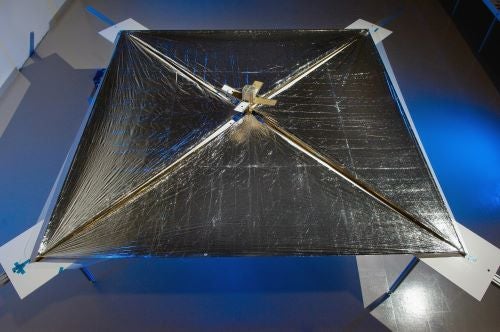Q: If photons have no mass, how can they propel solar sails like the Planetary Society’s LightSails?
A: Photons don’t have mass, but they do have momentum, which is energy associated with motion. If a photon strikes something, it can give some of its momentum to the object it hits. In the case of a solar sail, when light hits the sail’s reflective surface, it bounces off, transferring some of the energy associated with its initial motion to the sail. This force is called radiation pressure, and it pushes the sail slightly in the direction the photon was traveling before it bounced off.
Although the energy transferred by a single photon is tiny, there is no friction in the vacuum of space. Each time a photon strikes the solar sail, it gains slightly more energy. The LightSail design is about 344 square feet (32 square meters) in size, compared to its width of only 0.0002 inch (0.00051 centimeter). These dimensions ensure the sail is both lightweight and has a large area to allow many photons to hit it at once. The Planetary Society calculated that its current LightSail mission, LightSail 2, can capture enough momentum from sunlight to accelerate about 0.0023 inch (0.0058 cm) per second, each second. After a month, this acceleration would boost the sail’s speed to nearly 341 mph (550 km/h).
Radiation pressure can affect interplanetary dust and even small objects, such as asteroids, over time. But radiation pressure also diminishes with distance from the Sun, so the farther an object is from our star, the smaller the radiation pressure it feels, until this force becomes negligible.
Associate Editor










